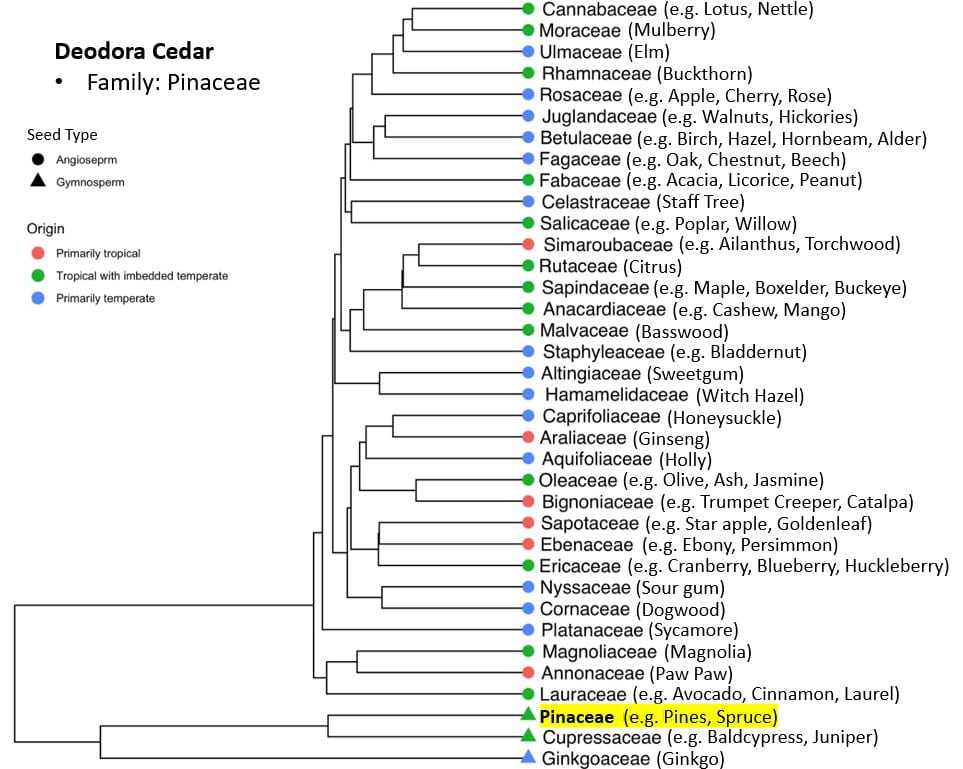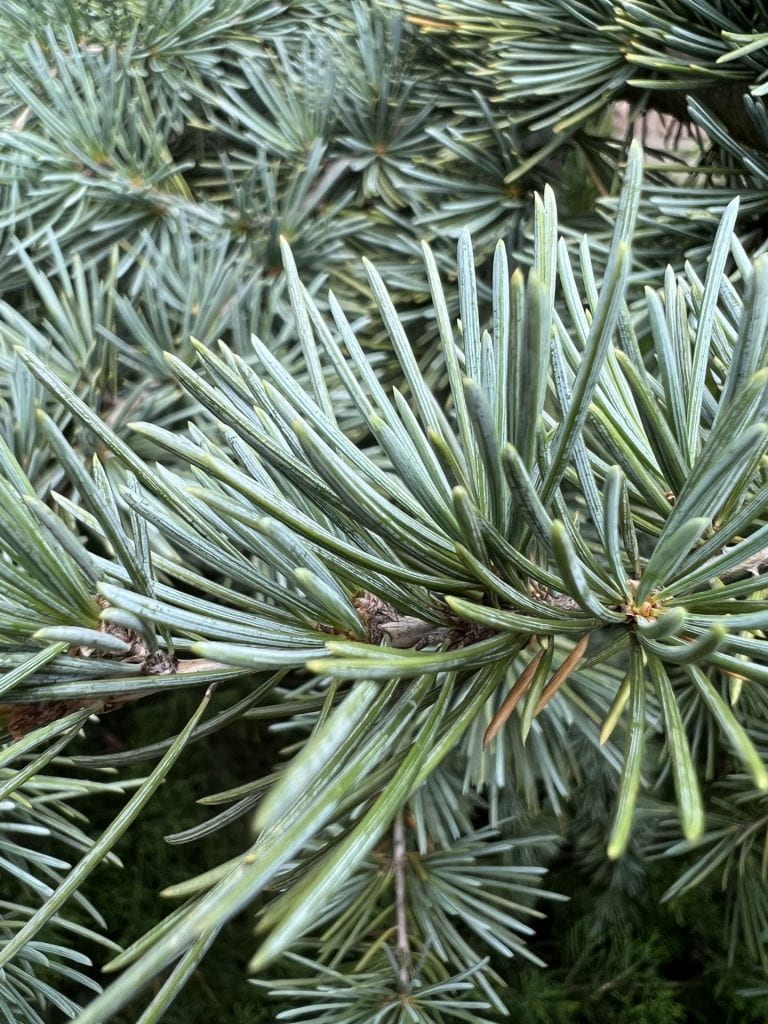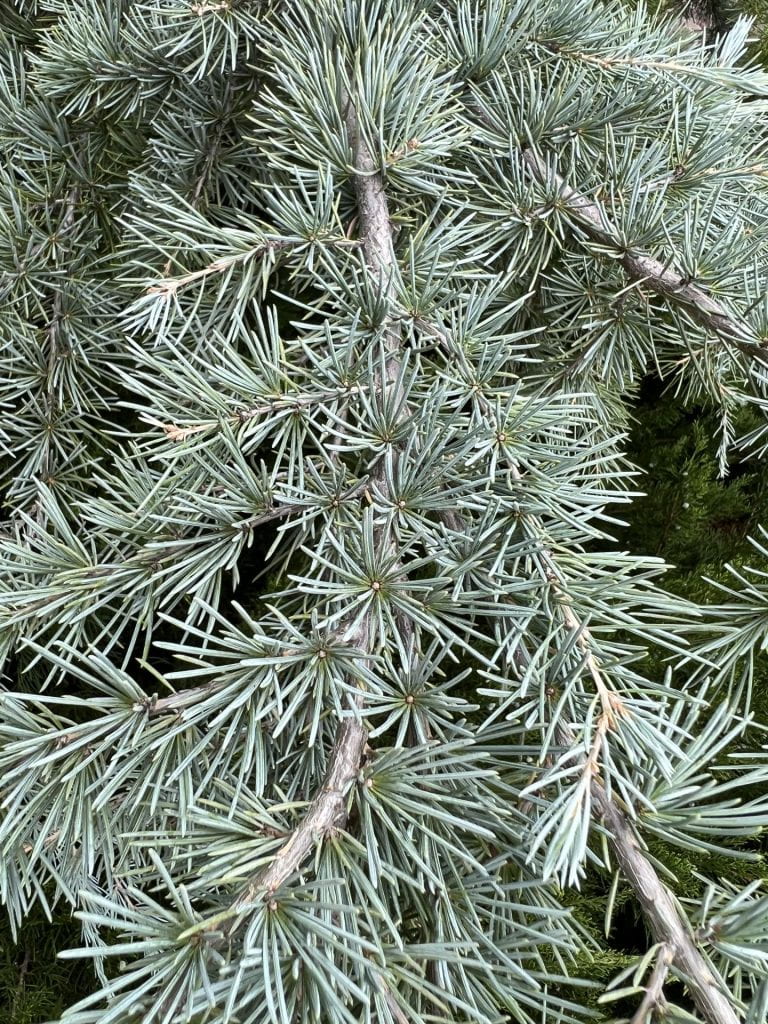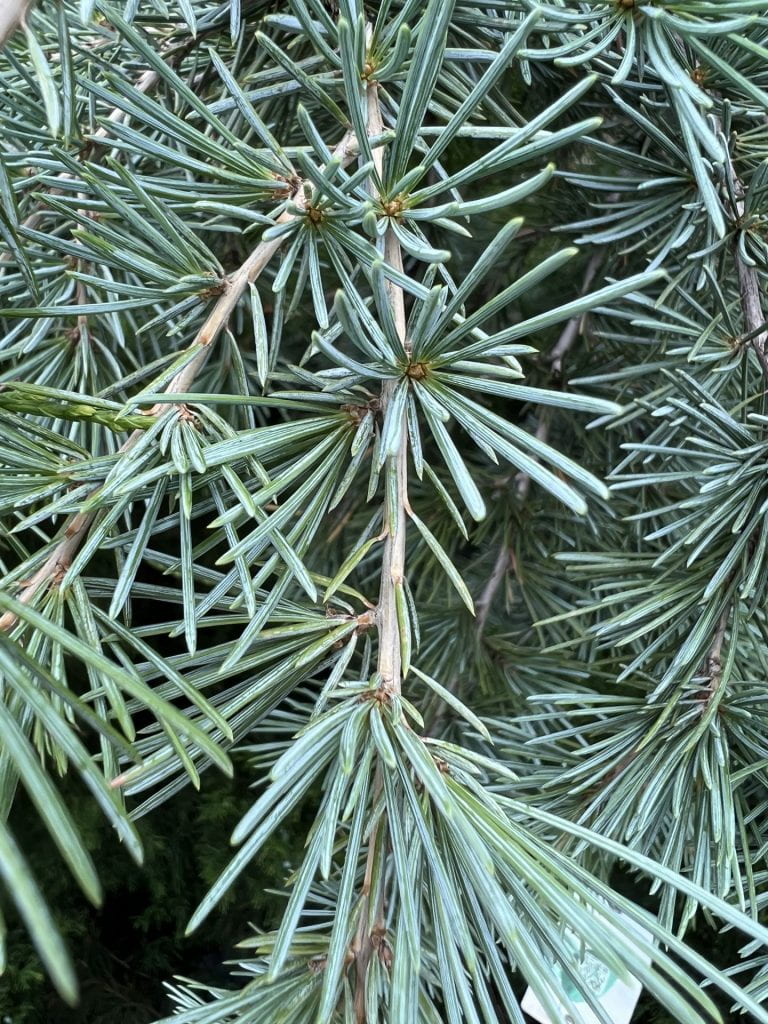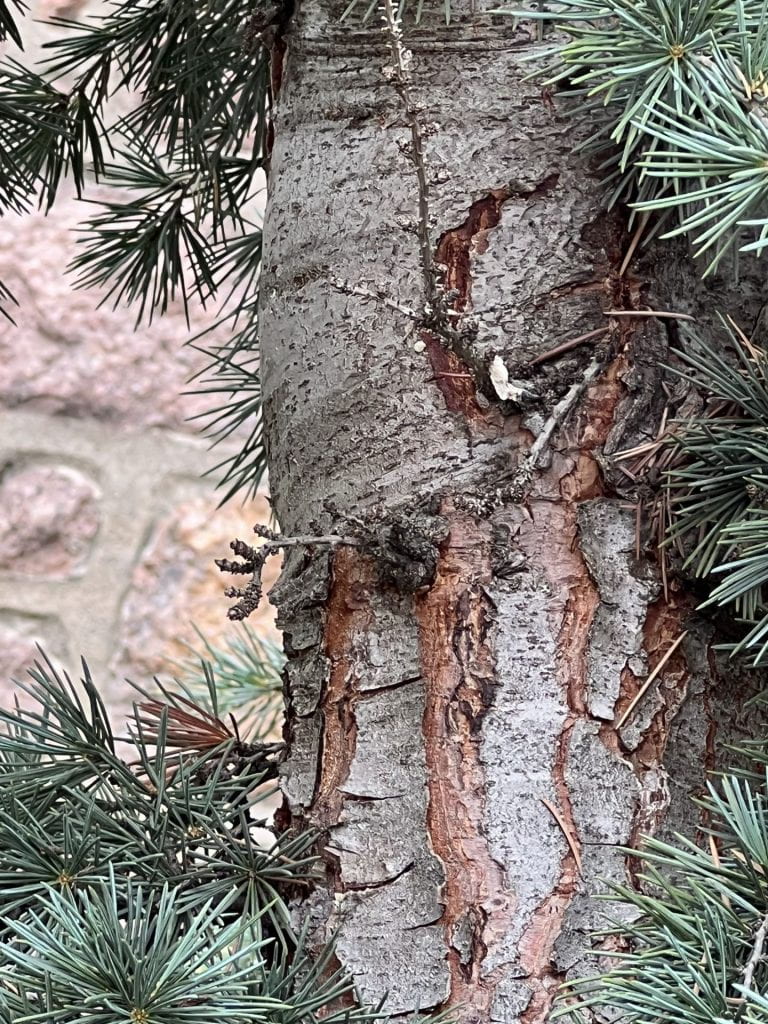Deodar Cedar
Arbor walk #34, Treekeeper ID #3817

This tree species is originally native to the Himalayas range, but it is possible to grow it in certain specific conditions in North America. It is not recommended, however, to plant these trees in St. Louis because of their inability to survive the harsh winters. Of the true cedars, it has the highest tolerance of hot and humid summers; however the Deodar Cedar, especially the young trees, are susceptible to the area’s cold temperatures. It usually only grows about 50′ tall in cultivation, but in its native envrionment, it can grow upwards of 150′ to 200′.
This plant and others like it naturally deter many biting insects due to its cedar smell.

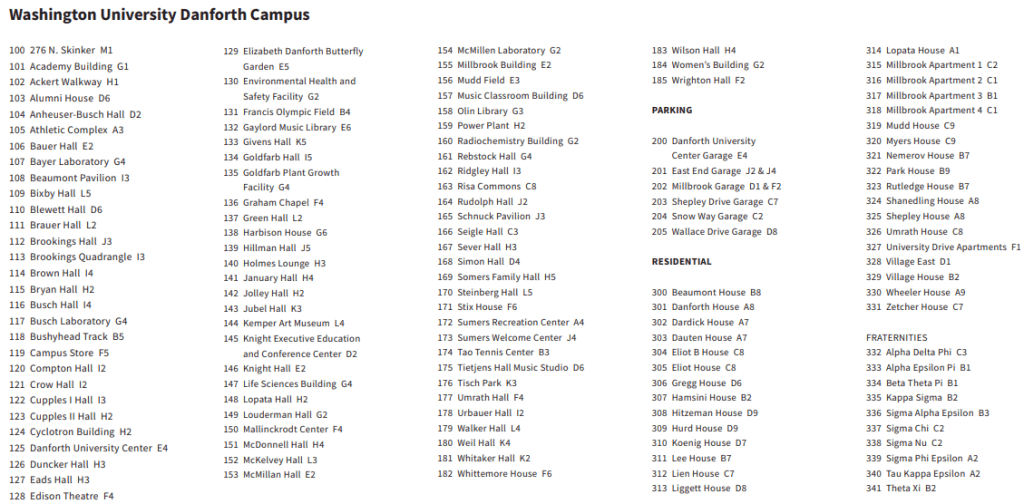
GPS Coordinates
N/A
Percent Concrete
N/A
Distance to Buildings
| Year | Close Building #1 | Close Building #2 | Close Building #3 |
|---|---|---|---|
| 2020 | Umrath Hall, 2.34 m | Mallinckrodt, 21.40 m | Danforth University Center, 29.76 m |
Distance to Other Species
| Year | Close Species #1 | Close Species # 2 | Close Species # 3 |
|---|---|---|---|
| 2020 | Deodar Cedar, 11.32 m | Chinese Fringetree, 20.15 m | Chinese Fringetree, 21.34 m |
Standard Measurements
| Year | Height (m) | DBH (cm) | Crown Diameter N-S (m) | Crown Diameter E-W (m) | Average Crown Diameter (m) |
|---|---|---|---|---|---|
| 2020 | N/A | N/A | 2.34 | 2.21 | 2.275 |
| 2023 | 8.72 | 14.7 | 4.11 | 3.47 | 3.79 |
Nests and Pests
| Year | Description |
|---|---|
| 2020 | N/A |
Leaf Identification
The leaves of the Deodar Cedar are 1″ to 2″ long needles. Unlike true pines, the leaves are not in fascicles. These leaves grow singly at first then later develop spur shoots. They are a bluish-green to silvery and stay attached all year long.
Twig and Bud Identification
The twigs of the Deodar Cedar are silvery-gray with numerous short spur shoots. The buds are very small and round.
Bark Identification
The Deodar Cedar has smooth and grayish-brown bark when young that matures into short furrows with scaly ridge-tops.
Cone Identification
The Deodar Cedar has upright cones that are typically 3″ to 4″ long and 3″ wide. They are usually resinous. The male cones are 2″ to 3″ long on the lower parts of the crown. The female cones form purplish on the upper portion of the crown. They mature into a reddish-brown color over the span of multiple years.
[photo forthcoming]
